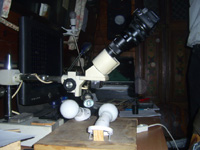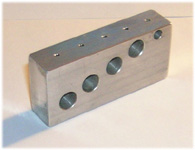Before any discussion can begin it must be realised, as we have done while looking through the various WCG reference collections, that there is no absolutely correct way of doing things; each student will have preferences regarding style of collecting, mounting or arranging a collection that they find personally most satisfying. Having stated that it must be realised that some methods are better than others and by pointing out various pitfalls (no pun intended) a great deal of wasted time and effort can be avoided.
INTRODUCTION
Members of the order Coleoptera are very likely to be found in more situations than those of any other group of animals; with the exception of high polar and wholly marine habitats they may be found everywhere and with so many vegetarian and xylophagous species it is probable that just about every plant species will host at least some stage of beetle life during its existence. The well known proceedure of making a killing jar from the young leaves of Prunus laurocerasus is testament to its poisonous qualities, the young leaves producing hydrocyanic acid gas when crushed,and so it might not be unreasonable to expect an indifference towards this species from the coleopterist. On the other hand the decomposition products produced during the life of a Laurel bush will most definitely not be ignored by a whole host of detritivores and other species e.g. those associated the various fungi living off damaged or decaying wood. Such an awareness, when applied to other ostensibly 'poisonous' species or unpromising situations, will help broaden the outlook of the amateur coleopterist and make our immediate environment seem much more promising; when recording coleoptera two things become obvious very quickly, firstly that specimens turn up in the most unlikely situations and secondly that as a result of this they usually do so when one has no means of taking them for examination. The fact that a very diverse adult beetle fauna may be found throughout the year would also suggest that the task of finding and recording a few species and producing a local list should be a relatively simple matter. And simple it is, at first.
Initially,unless you are studying a familiar species or group of species, eg.ladybirds for the national scheme, it is generally pointless and can be frustrating and confusing to take a fieldguide and notebook out and expect results. At this stage you need to do one of several things, either go into the field with somebody experienced and knowledgable, join a society or group and attend field meetings or, if you are keen and cannot wait to get started, bring a few specimens home individually tubed and labelled with date and locality data and examine them in order to find out which can or cannot be identified. A general guide to beetles and a decent magnifying glass can produce a surprisingly long list of confidently named species. Specimens that cannot be named can then either be released or preserved for later study. As experience is gained and new publications obtained the species list will expand, as will the number of entries in the field notebook which will always be taken out once serious fieldwork begins. By leaving plenty of blank space more species can be added retrospectively.
At first any area of garden or parkland or wasteground will produce specimens of interest using only very basic techniques eg. observation, sweeping or turning over debris. If this is done nocturnally as well as during the daytime then so much the better as more species will turn up. Any time of year will be productive. Beyond this there are many specialised ways of extracting beetles from their environment, and more of this later, but what produces more specimens and a more varied mix of specimens from a given area is the gaining of experience, this cannot be taught or described but we like to think that we can impart at least some of our own, admittedly sometimes limited, experience in the words that follow.

Recording from wood
Observation

Identification
Dung Sampling
Photography

Burlese Funnel
Pins